
UNESCO’s World Heritage Committee voted in favor of listing Lut Desert on the World Heritage List on Sunday, July 17, 2016.
The move raises the total number of world heritage sites in Iran to 21, following the inscription of the country’s ancient Qanat system on Friday, July 15, 2016.
Iran has the highest number of world heritage sites in the Middle East.
From July 20th 2016, Pars Tourist Agency is pleased to lunch its combined Qanat – Lut Desert tour coupled with cultural site seeing in the historical cities of Kerman, Yazd, Shiraz, Isfahan and Kashan.
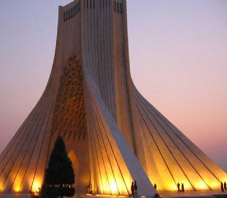 Day 1: Tehran (Arrival).
Day 1: Tehran (Arrival).
Tehran, with the population of about 16 million was the settlement of the last two dynasties, Qajar and Pahlavi, that ruled the country for almost 200 years. Home to many monuments of historical and cultural interests, as well as key government buildings of modern times.
Early Arrival, Transfer to hotel (Transfer Information) where you can rest for a few hours.
Morning: Visiting National Museum.
Afternoon: National Jewels Museum, and Carpet Museum.
Overnight hotel in Tehran.
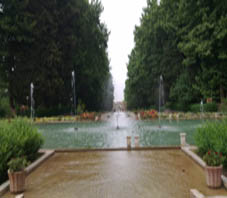 Day 2: Flight to Kerman.
Day 2: Flight to Kerman.Kerman is the largest and most developed city in Kerman Province and the most important city in the southeast of Iran. It is also one of the largest cities of Iran in terms of area. Kerman is famous for its long history and strong cultural heritage. The city is home to many historic mosques and Zoroastrian fire temples.
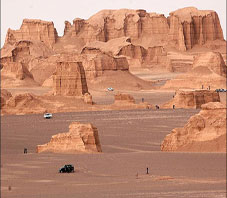 Day 3,4: Drive to Lut Desert.
Day 3,4: Drive to Lut Desert.Lut Desert, also spelled Dasht-e-Loot and known as the Loot Desert, is a large salt desert in Kerman province and is the world's 25th largest desert.
Morning: Transfer to Lut, trekking and overnight camping in the desert.
 Day 5: Drive to Zeinodin Caravanserai.
Day 5: Drive to Zeinodin Caravanserai.The Zein-o-Din Caravanserai is located in Yazd province, Iran. The caravanserai dates to the 16th century and is situated on the ancient Silk Road. It is one of 999 such inns that were built during the reign of Shah Abbas I to provide facilities to travelers. Of these, Zeinodin is one of two caravanserais built with circular towers.
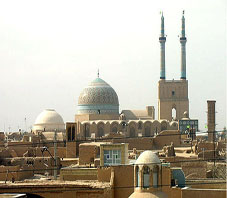 Day 6: Drive to Yazd via Mehriz.
Day 6: Drive to Yazd via Mehriz.A Qanāt is a gently sloping underground channel with a series of vertical access shafts, used to transport water from an aquifer under a hill. Qanāts create a reliable supply of water for human settlements and irrigation in hot, arid, and semi-arid climates.
The qanat technology is known to have been developed in Iran by the Persian people sometime in the early 1st millennium BC, and spread from there slowly westward and eastward.
Morning: Drive to Yazd via Mehriz. Visiting Qanat systems in Mehriz.
Afternoon: Visiting Tower of silence and Zoroastrian fire temple.
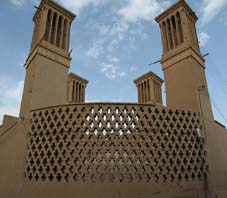 Day 7: Visiting Yazd.
Day 7: Visiting Yazd.
Taking a stroll through the city, visiting Jame' Mosque, Alexander Prison, Twelve-Imam Tomb, Amir Chakhmaq square and the old parts of the city.
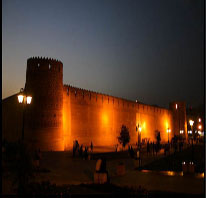 Day 8: Drive to Shiraz via Naqsh-e-Rostam and Persepolis.
Day 8: Drive to Shiraz via Naqsh-e-Rostam and Persepolis.
Persepolis, founded by Darius I in 518 B.C., was the capital of the Achaemenid Empire. It was built on an immense half-artificial, half-natural terrace, where this king of kings at the time created an impressive palace complex inspired by Mesopotamian models. The historical importance and quality of the monumental ruins make it a unique archaeological site. It seems that Darius planned this impressive complex of palaces not only as the seat of government but also, and primarily, as a show place and a spectacular center for the receptions and festivals of the Achaemenid kings and their empire, such as for the celebration of Nawruz.
Next stop will be Naqsh-e-Rostam. Opposite the mountain of Rahmat, a ten-minute drive to the north, proudly stands the Naqsh-e-Rostam, the magnificent burial place of Achaemenid kings. This is also the site of seven bas-reliefs dating back to Elamite and Sassanid period.
 Day 9: Visiting Shiraz.
Day 9: Visiting Shiraz.
Shiraz, a city that has been at the center of Persian culture for more than 2,000 years, has the reputation as being a progressive city. This city of sophistication that was once the country's capital is crowned as the heartland of Persian culture. Shiraz will never fail to conjure up images of roses and nightingales, gardens and poetry.
Early in the morning, you will relish in the highlights of Shiraz by visiting sites that were full of life when this city was the capital of Iran during the Zand Dynasty. You will be inspired by the glorious Karim Khan palace, the splendid Vakil mosque, Vakil Bazaar and Saray-e-Moshir with its splendid architecture and interesting ethnic souvenir shops, and the Nasir Almolk mosque. Next, you will stop for a mouth-watering Iranian lunch at one of the traditional restaurants of Shiraz.
This city in the province of Fars is home to famous poets such as Hafez and Sa'adi as well as historical sites from different eras stretching back 6,000 years ago. Hafez was one of Persia’s greatest poets who has impressed the world with his poetic mastery. A trip to the site where he is buried and honored is likely to stir the hearts and minds of the visitors.
Sa’adi was a poet, philosopher and mystic. About seven centuries ago Sa’adi recorded all his experiences from his travels to different countries and cities in verse and rhyme prose in two books, Boustan and Golestan. These two books inform and inspire the reader. You will have the chance to pay homage to this great poet when you visit his burial site which is set amidst beautiful gardens and pools.
In the evening, you will visit Ali-Ebn-e-Hamzeh marvel at its beauties. You will take a stroll among the tall and proud cedars of the Jahan Nama Garden. The evening tour ends with visits to the Delgosha Garden and Khajoy-e-Kermani Tomb.
At night you will have dinner in a restaurant in the north of Shiraz and stay the night in Shiraz.
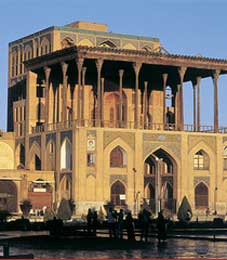 Day 10: Drive to Isfahan via Pasargadae.
Day 10: Drive to Isfahan via Pasargadae.
On the way to Isfahan, you will have a stop in Pasargadae to visit the most important and majestic monuments there. The tomb of Cyrus the Great, the originator and the great founder of Achaemanian Emperor, (500 years BC) is the oldest historical tomb. The wonderful architecture of his tomb, the huge fertile land over there beside the brave personality of Cyrus the Great inspires the visitors. This Archeological environment was the worshiping place for the followers of several religions and still it is so. Followed by the relief of the winged man and get familiar with its historical elucidations some researchers gave specific theories regarding the relation between personality of Cyrus the Great and one of the prophets of Holy Book. By visiting this majestic tomb you can have your personal comment about it.
Isfahan the legendary city which never fails to enchant its visitors is the pearl of traditional Islamic archeology. This city is revived by the works of contemporary artists. Isfahan prides itself in having fascinating historical garden palaces. Legend has it that the city was founded at the time of Tahmoures and because of its glories has been entitled “Half the World”. Your evening tour includes the famed Imam Square (Naqsh-e-Jahan), a huge square second in the world to Beijing's Tiananmen Square. Tour the architectural marvels of Sheikh Lotfollah and Imam Mosques, Aliqapu Palace, Chehel Sutoon and Hasht Behesht Palaces, and also visit one of the most famous bazaars in Iran, where we can purchase the arts & crafts for which Isfahan is so well renowned. Stay overnight in Isfahan.
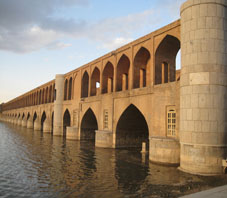 Day 11: Visiting Isfahan.
Day 11: Visiting Isfahan.
Isfahan’s Jame' mosque displays several centuries of historical Islamic evolution. This mosque is a gallery of Islamic architecture in which the progress of architecture from the outset of Islam till recent times is evident. Then we will visit Vank Church which is one of the most beautiful Armenian churches in the world and will undoubtedly capture the attention of every Christian. Our day will conclude with a visit to Monar Jomban, the tomb of a Sufi with its shaking minarets and some historical bridges. Evening is free at leisure.
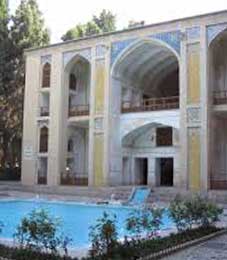 Day 12: Drive to Kashan via Abyaneh.
Day 12: Drive to Kashan via Abyaneh.
On the way to Kashan, we will visit the UNESCO recognized village of Abyaneh, located at the foot of Mount Karkas and in the vicinity of desert. Appreciate the serenity of this quaint village with its splendid archaeology and meet the dwellers who speak, live and dress in the original Persian style.
Next, visit Tabatabaiha and Borojerdiha houses in Kashan and some other historical places specially chosen by our tour guide and be acquainted with the previous century’s architecture, the Qajar era. Staying overnight in Kashan.
Day 13: Drive to IKA. Departure.